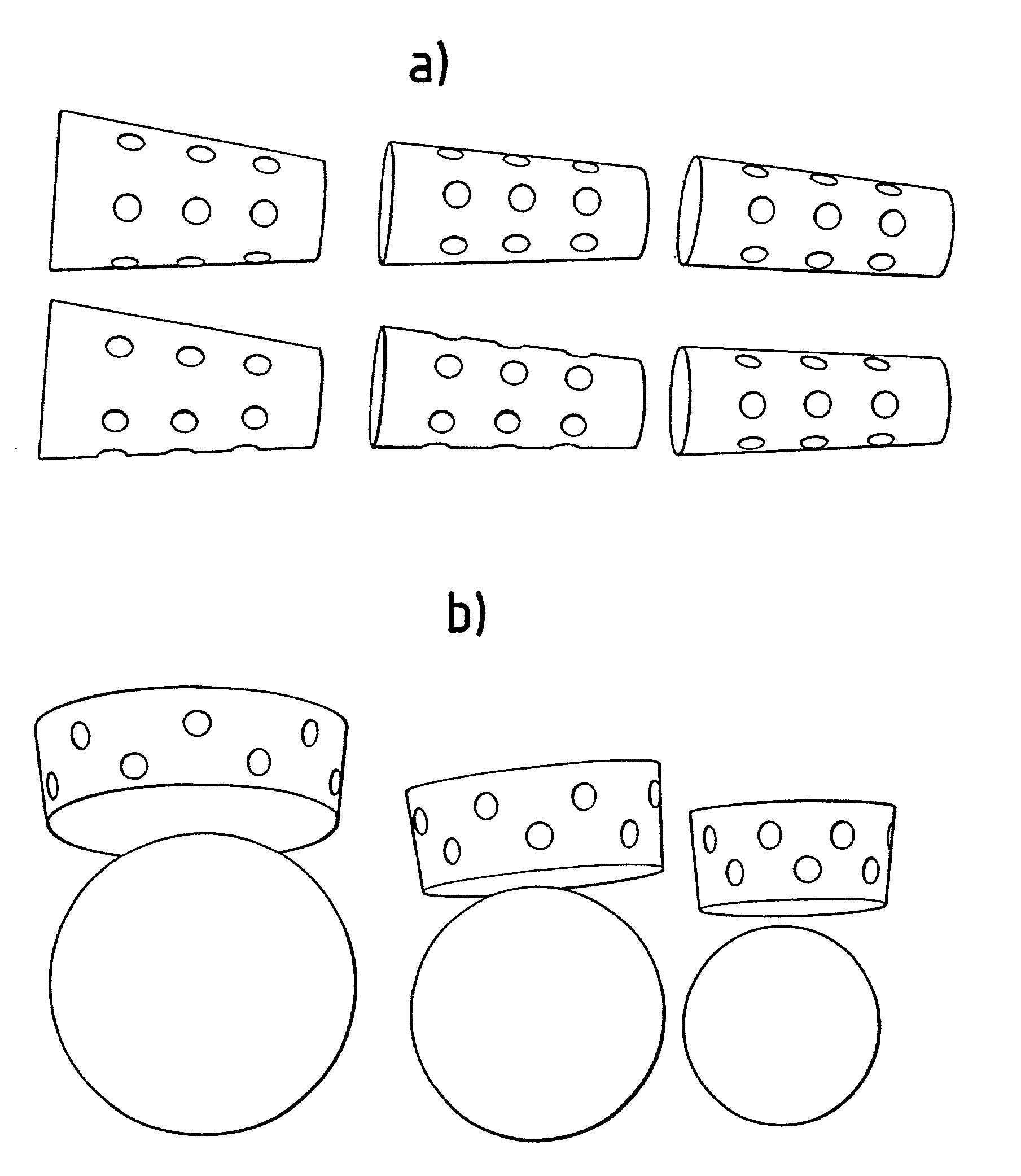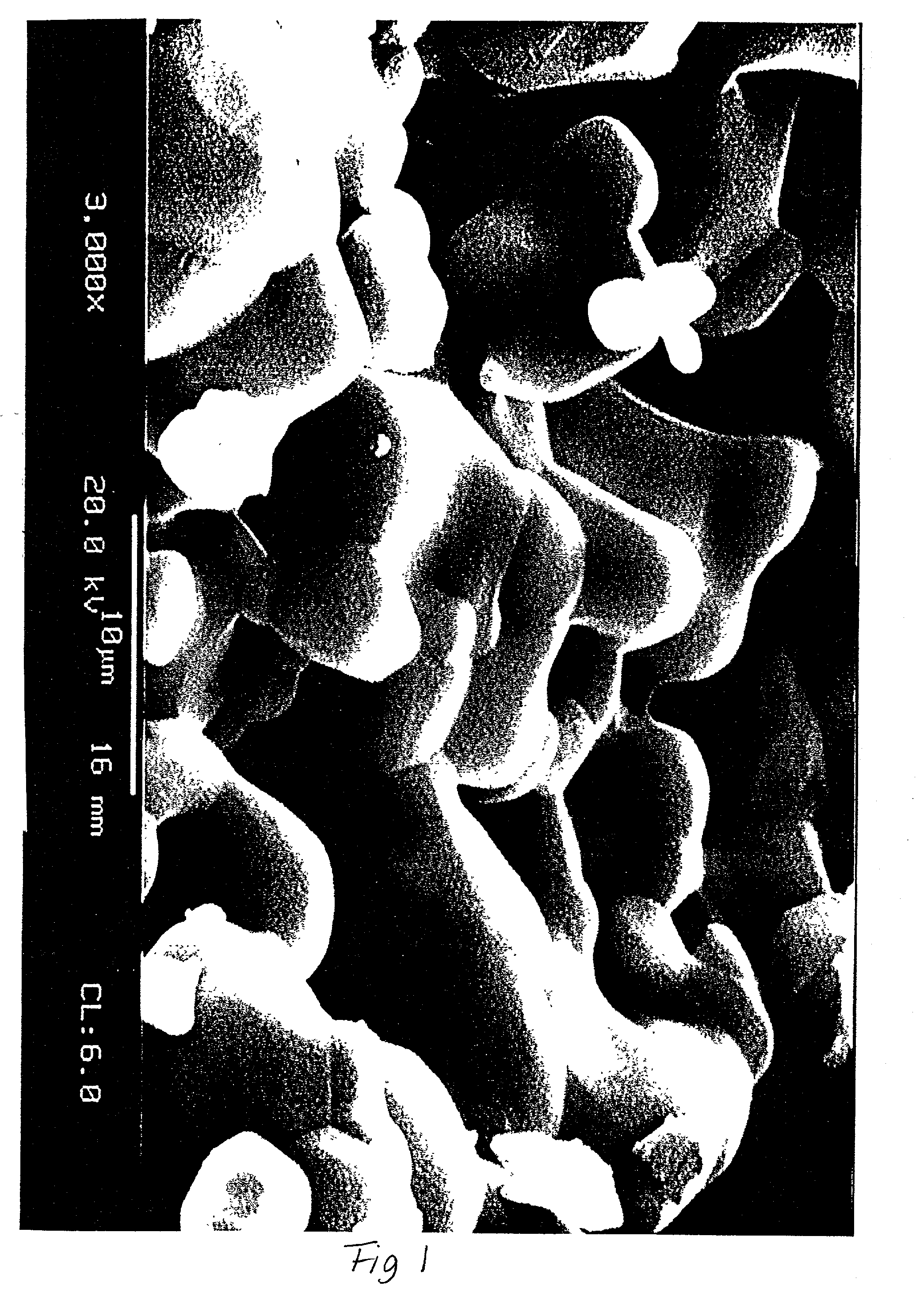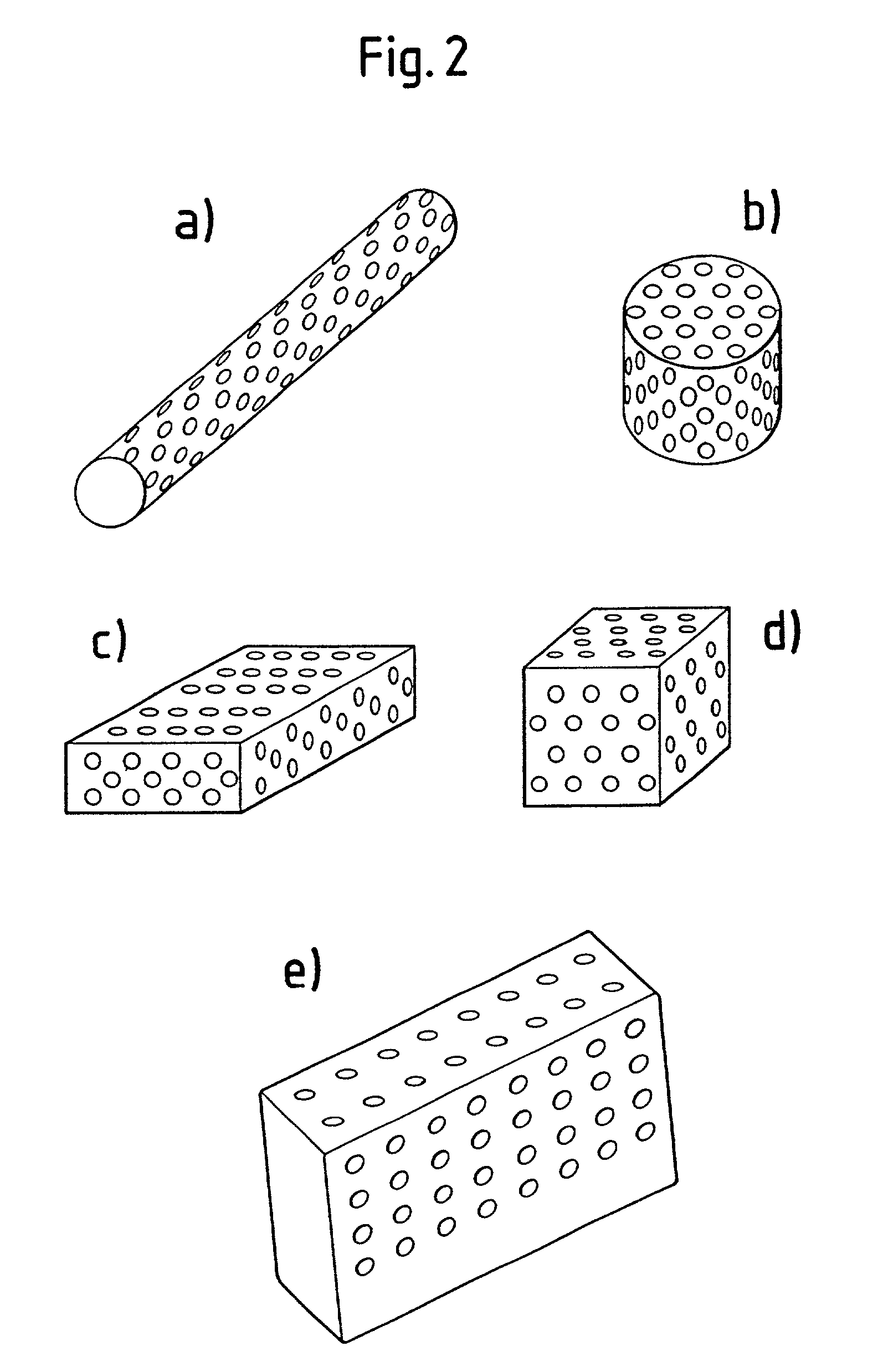Resorbable bone replacement and bone formation material
a bone replacement and bone technology, applied in the field of resorbable bone replacement and bone formation materials, can solve the problems of increased tendency to particulate breakdown, increased formation of polynuclear giant cells, and mechanical strength declin
- Summary
- Abstract
- Description
- Claims
- Application Information
AI Technical Summary
Benefits of technology
Problems solved by technology
Method used
Image
Examples
Embodiment Construction
[0069]1. According to an advantageous embodiment, the ceramic implant material according to the invention can be synthesised from the two inorganic materials calcium hydrogen phosphate and calcium carbonate from stoichiometric mixtures by sintering according to the formula
[0070]2CaHPO4+CaCO3→+temp.β-3CaO·P2O5+CO2↑+H2O↑
The synthesis is carried out at temperatures below 1200° C. in the β-TCP phase region. In order to avoid the formation of undesirable subsidiary phases such as that of α-TCP, of amorphous phases and of hydroxyapatite, rectification of the material is carried out by sintering several times in the above-mentioned temperature range.
[0071]2. Forming of the implant material according to the invention is advantageously carried out by compressing the phase-pure TCP powder to form long cylindrical blanks, baking these at T<1200° C. and bringing the blanks obtained in that matter into the desired form by means of chip-removing methods (milling, turning and drillin...
PUM
 Login to View More
Login to View More Abstract
Description
Claims
Application Information
 Login to View More
Login to View More - R&D
- Intellectual Property
- Life Sciences
- Materials
- Tech Scout
- Unparalleled Data Quality
- Higher Quality Content
- 60% Fewer Hallucinations
Browse by: Latest US Patents, China's latest patents, Technical Efficacy Thesaurus, Application Domain, Technology Topic, Popular Technical Reports.
© 2025 PatSnap. All rights reserved.Legal|Privacy policy|Modern Slavery Act Transparency Statement|Sitemap|About US| Contact US: help@patsnap.com



